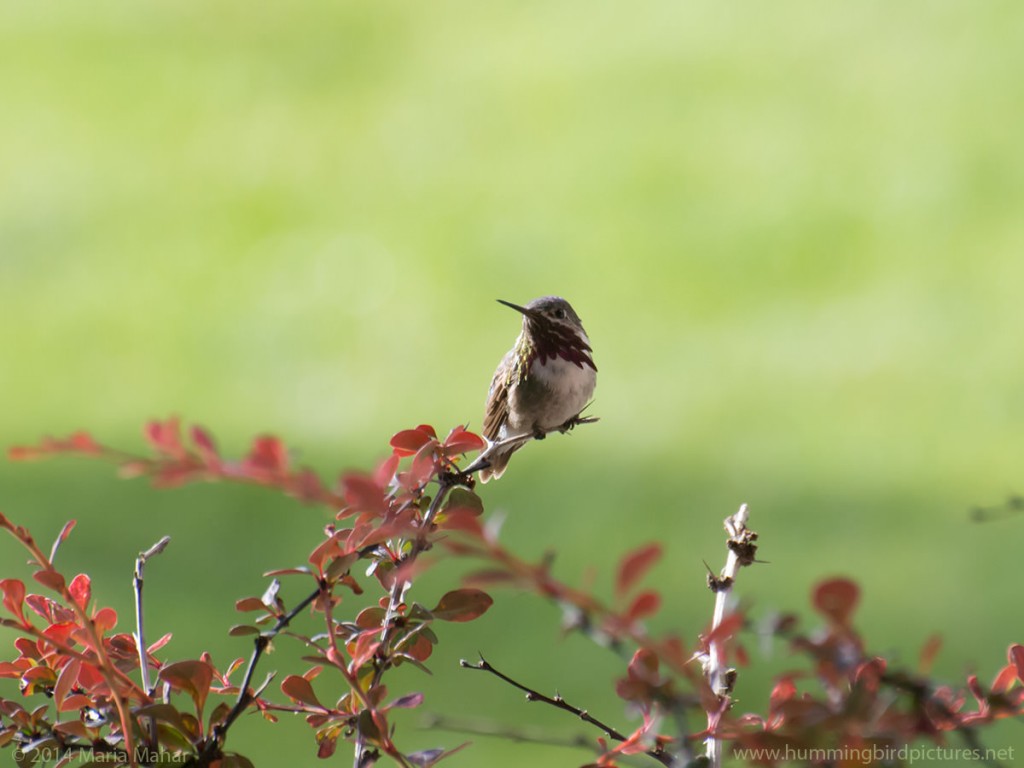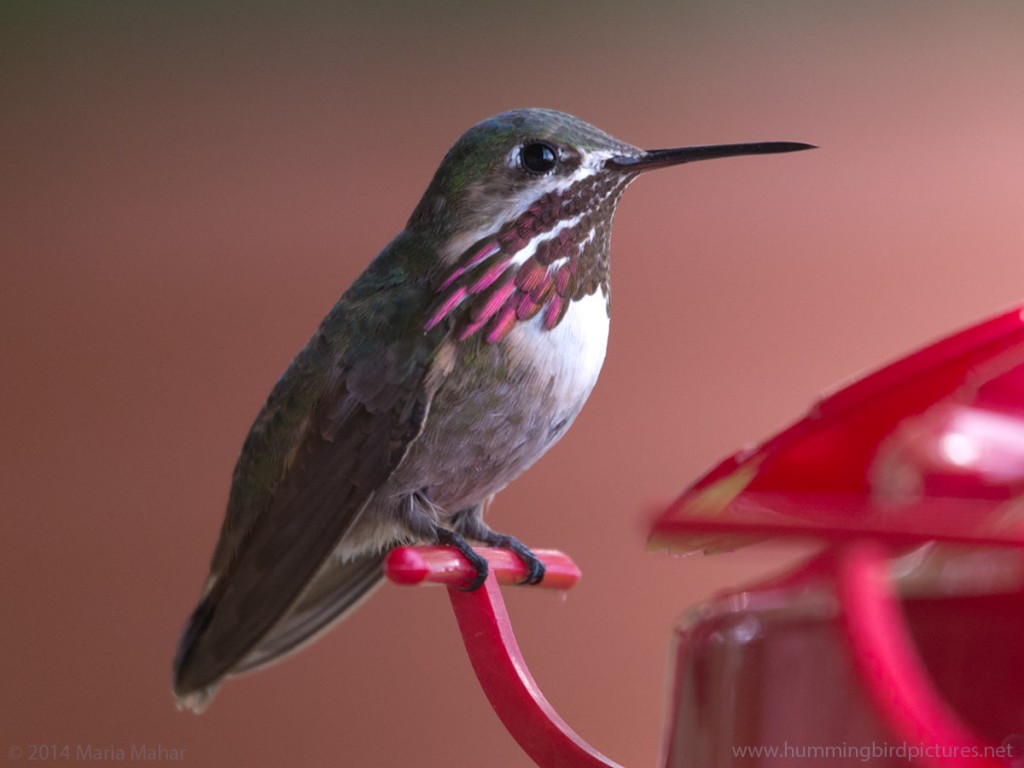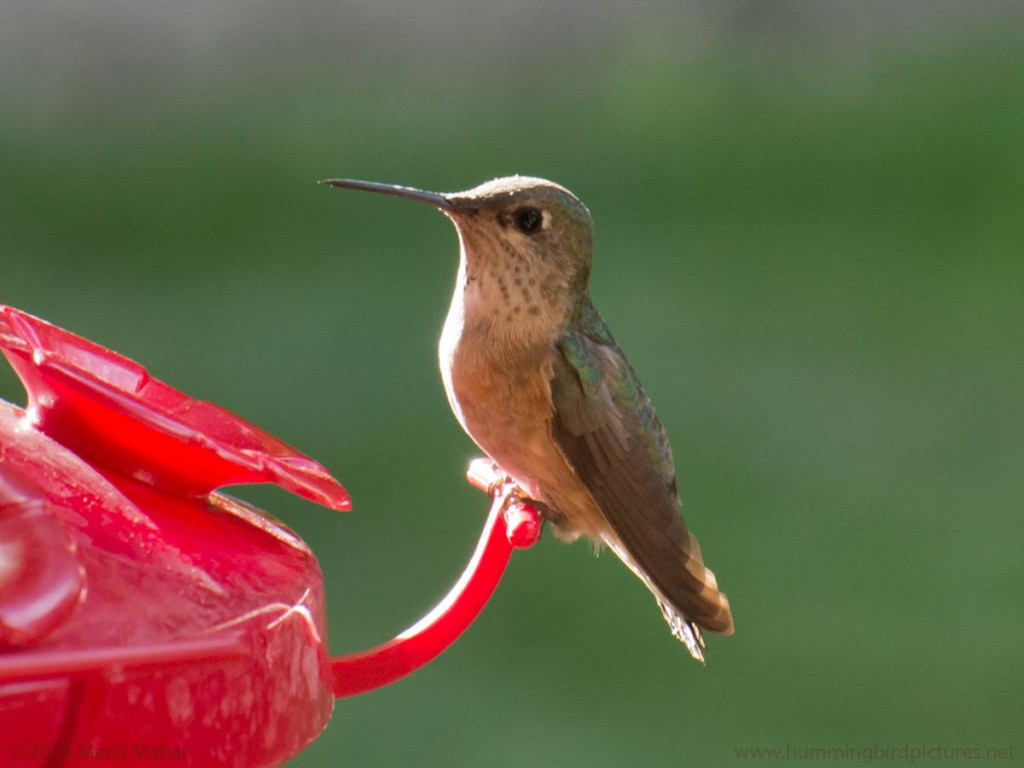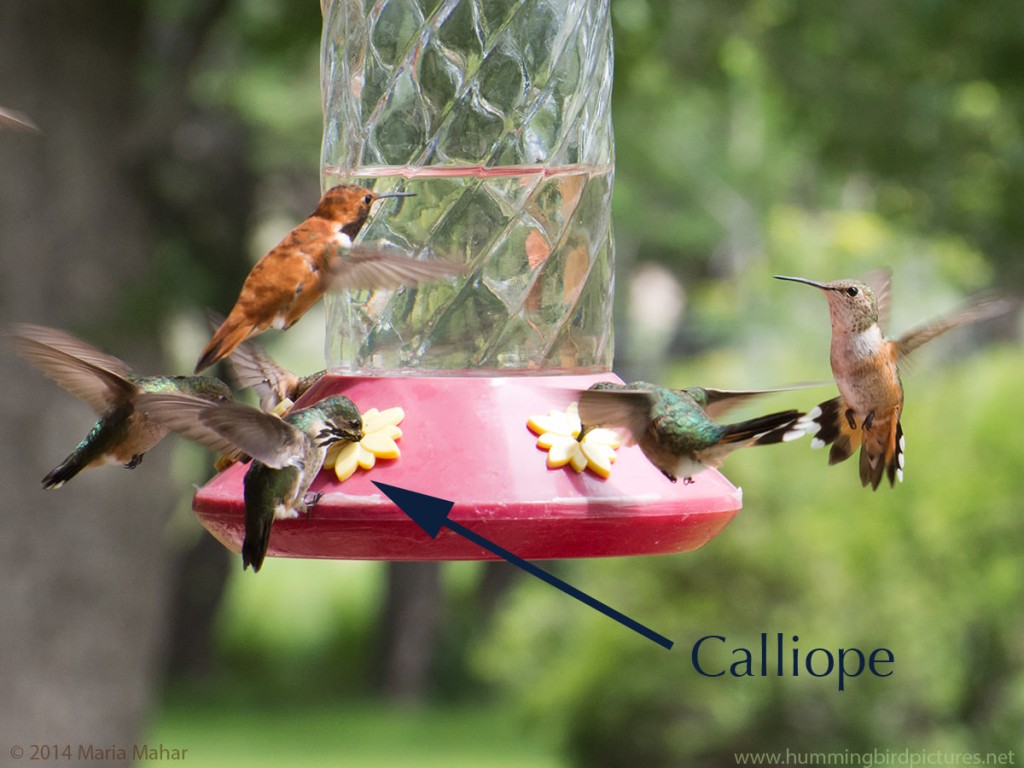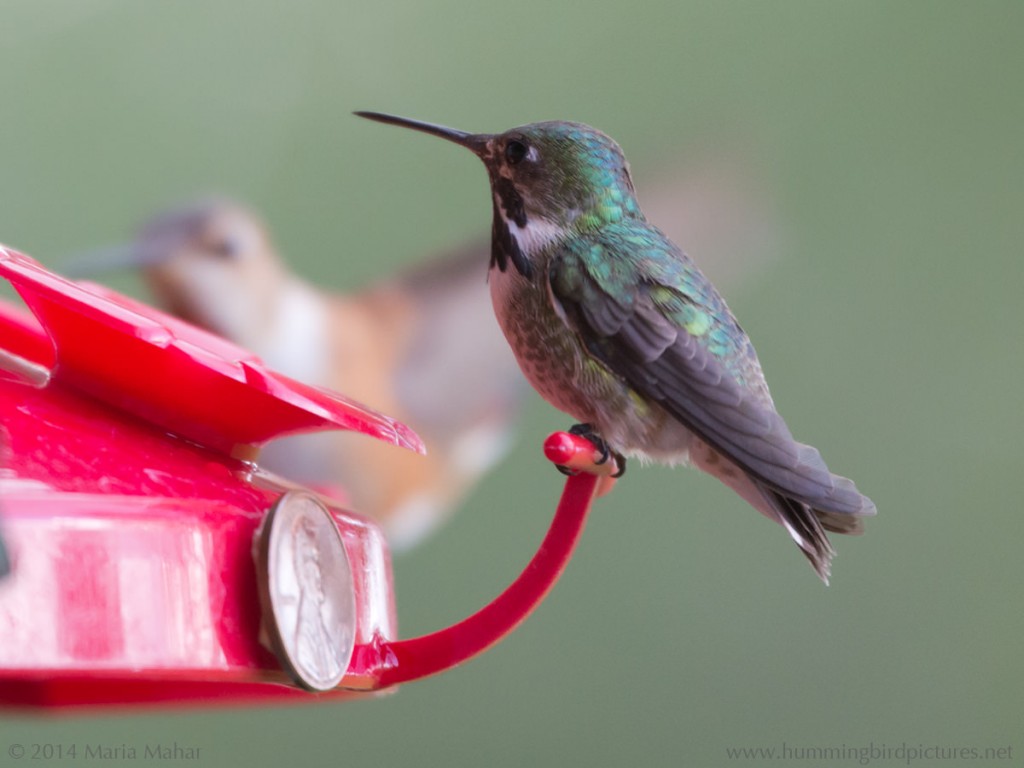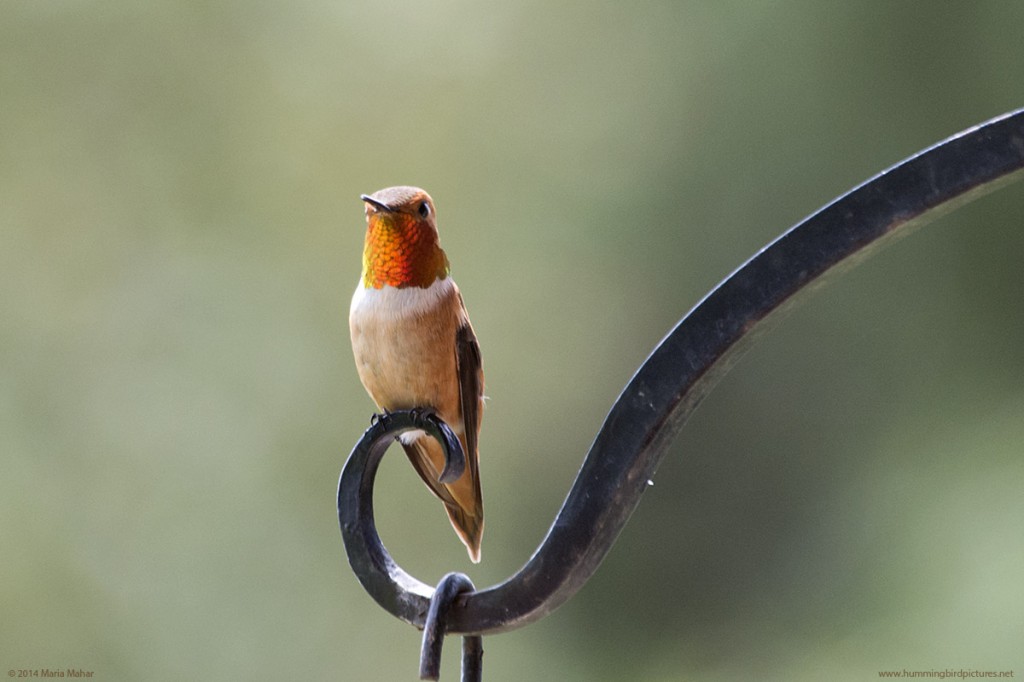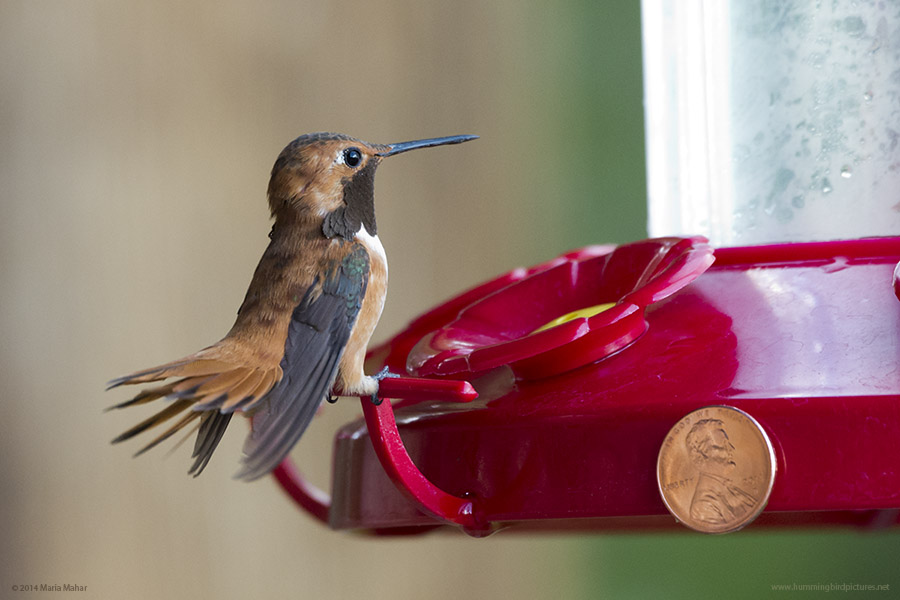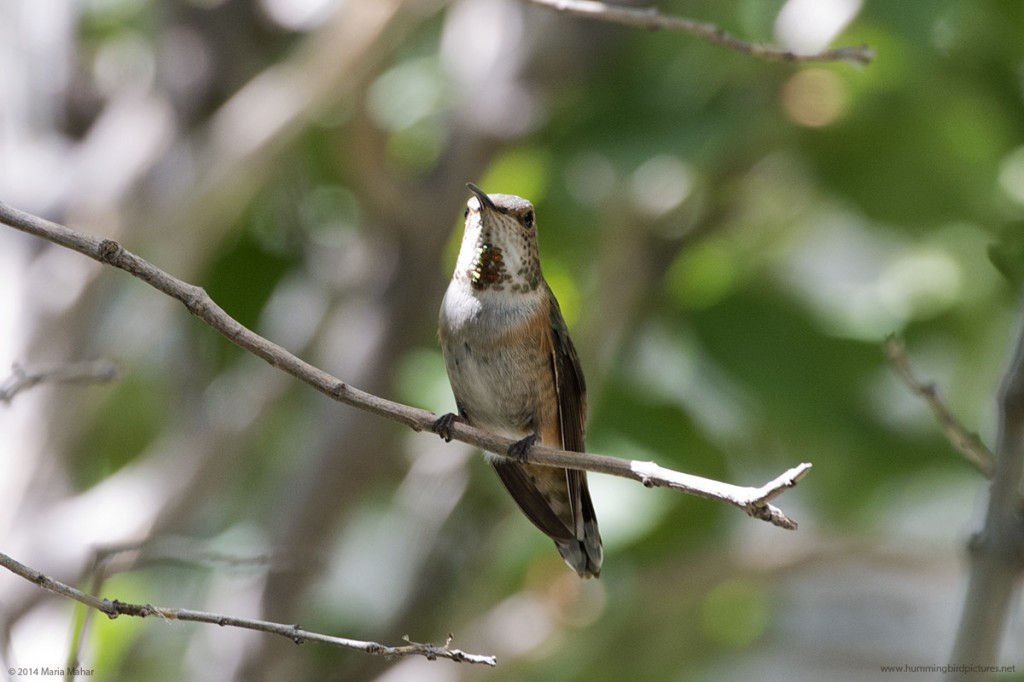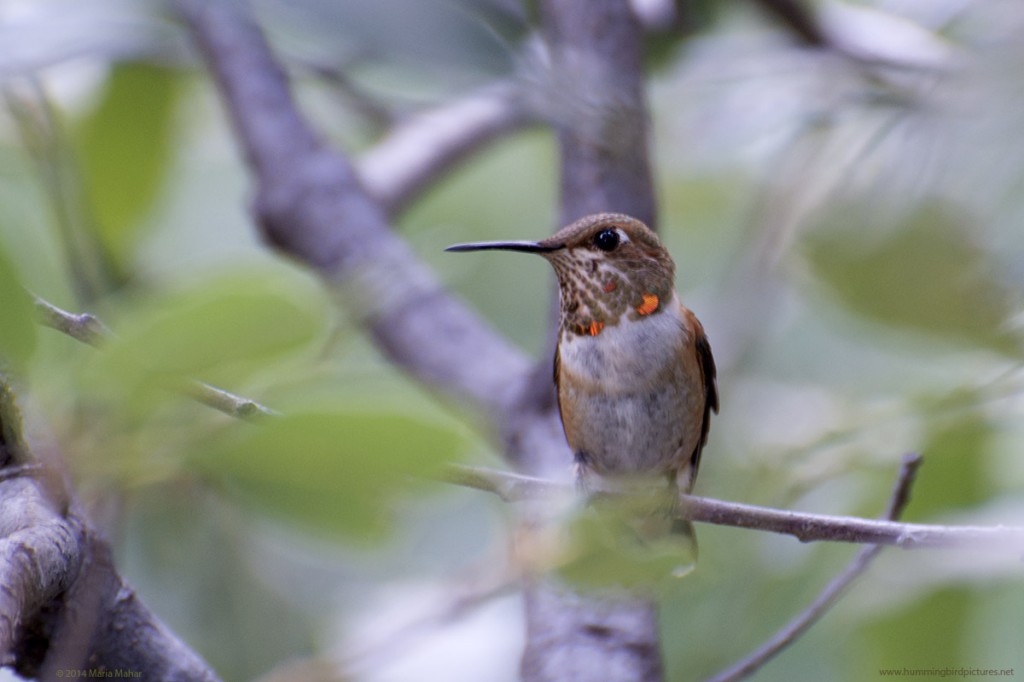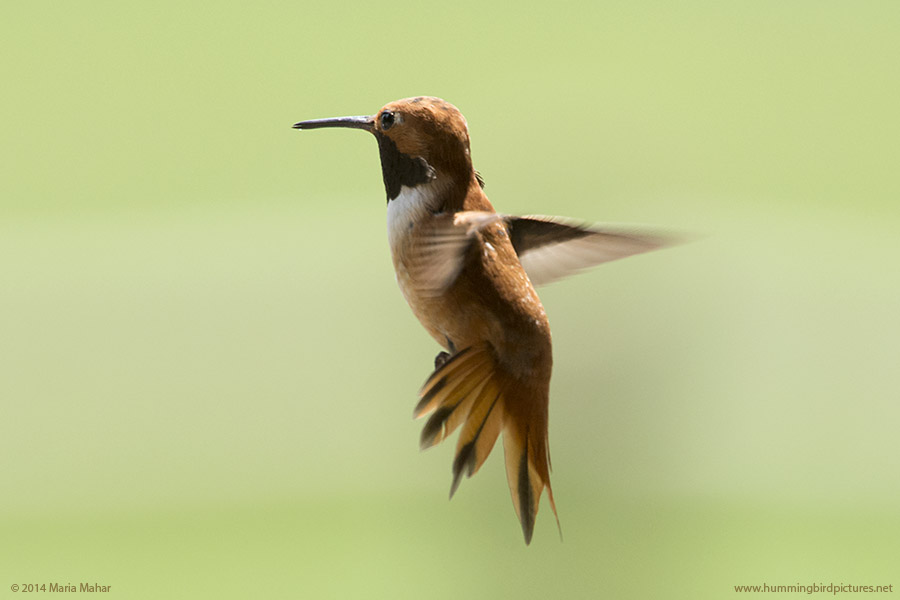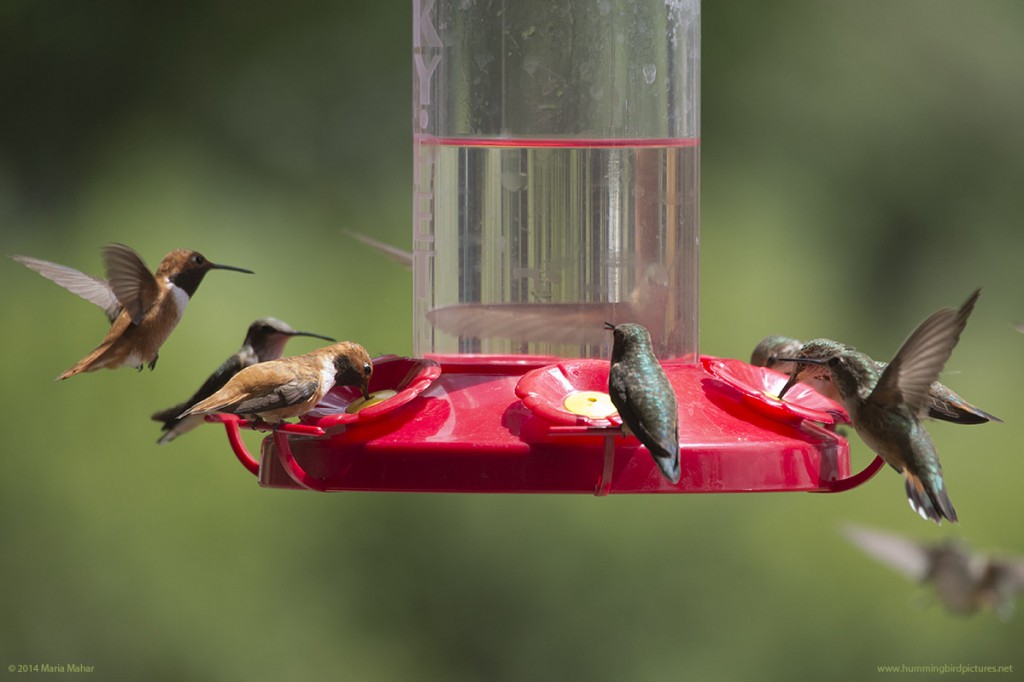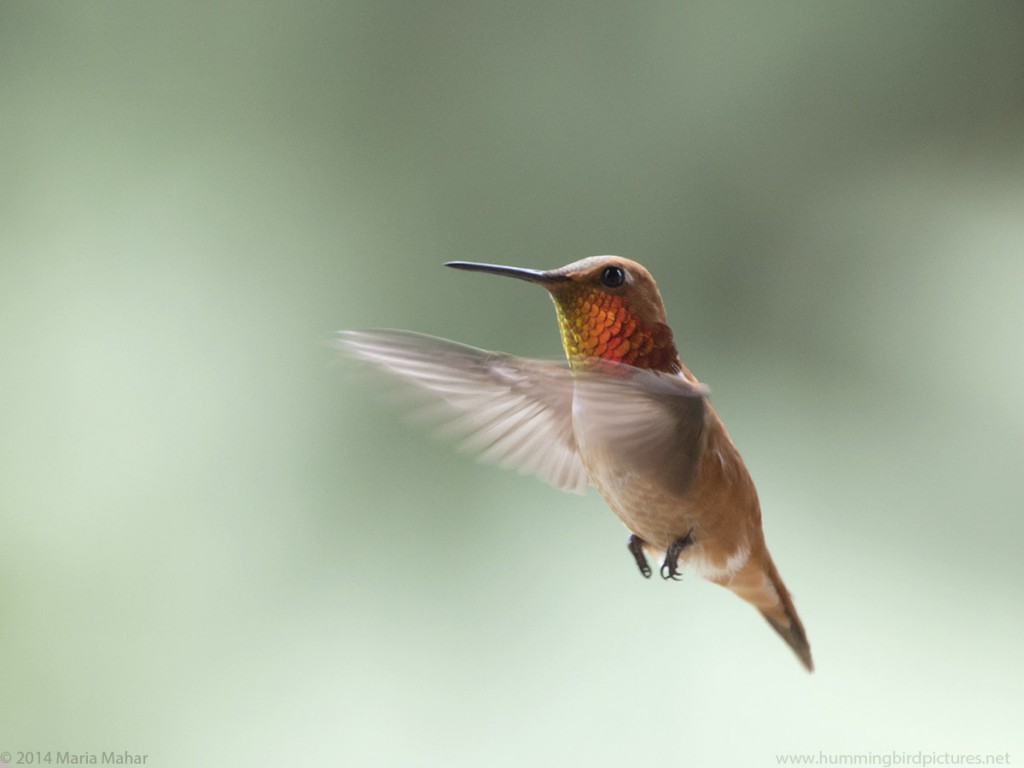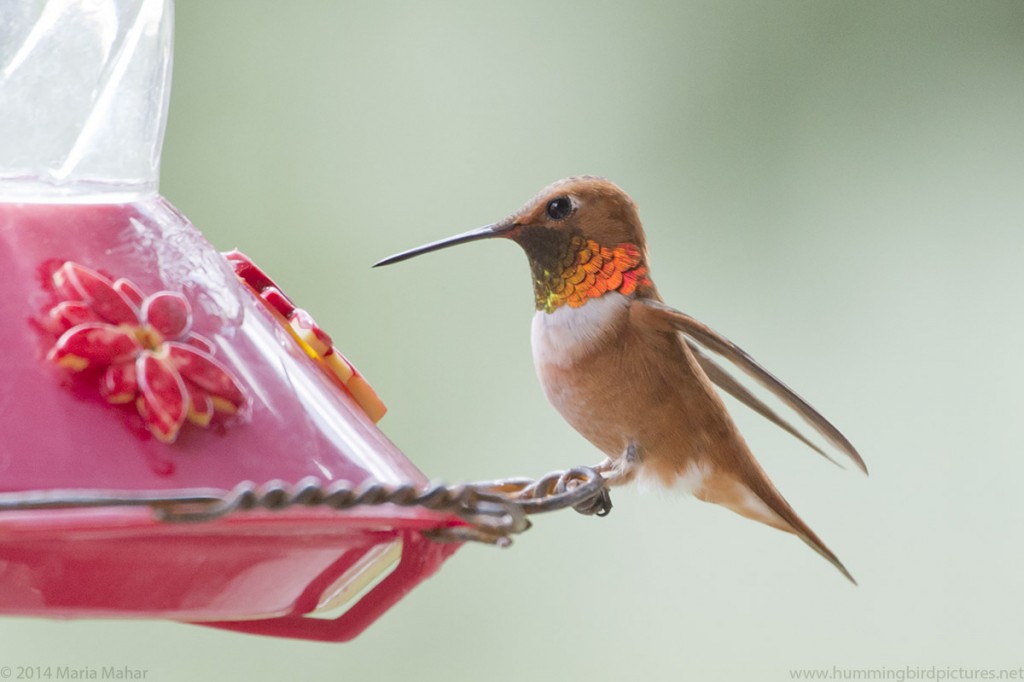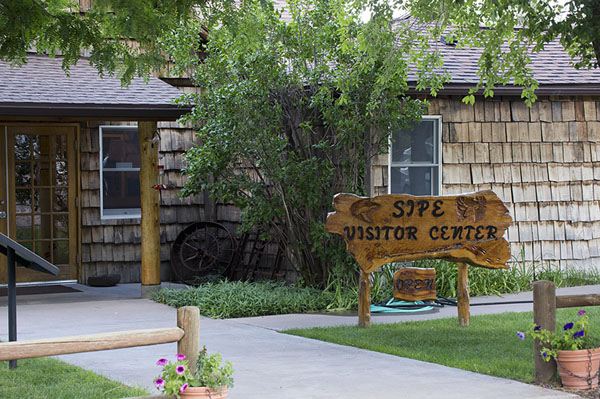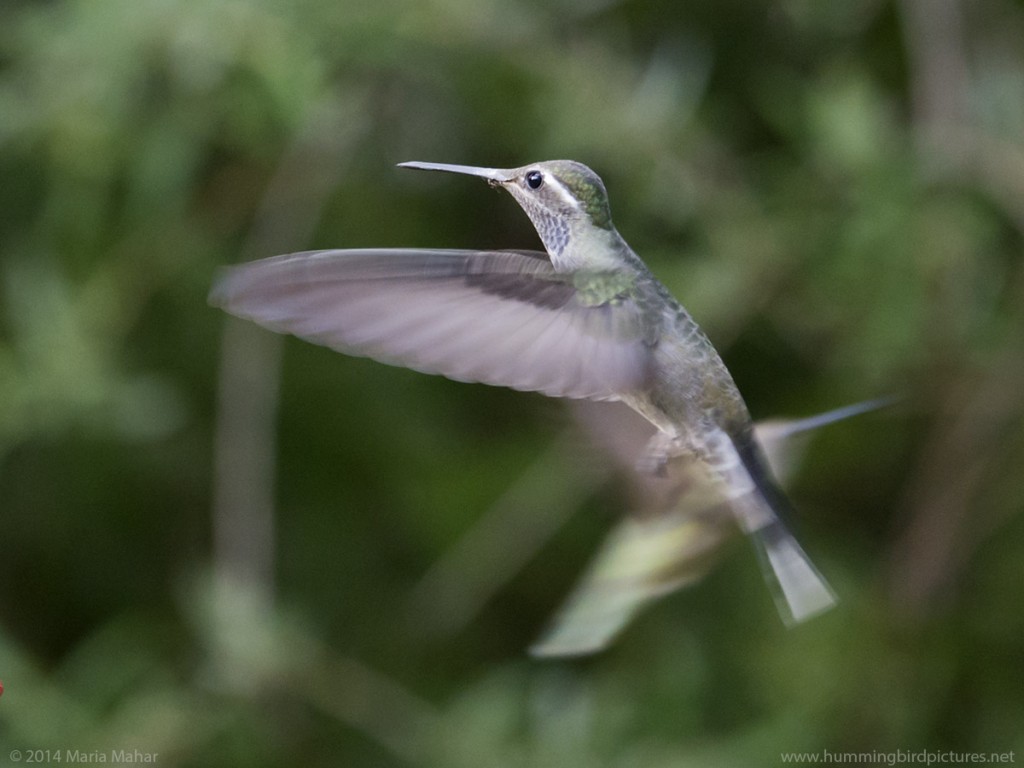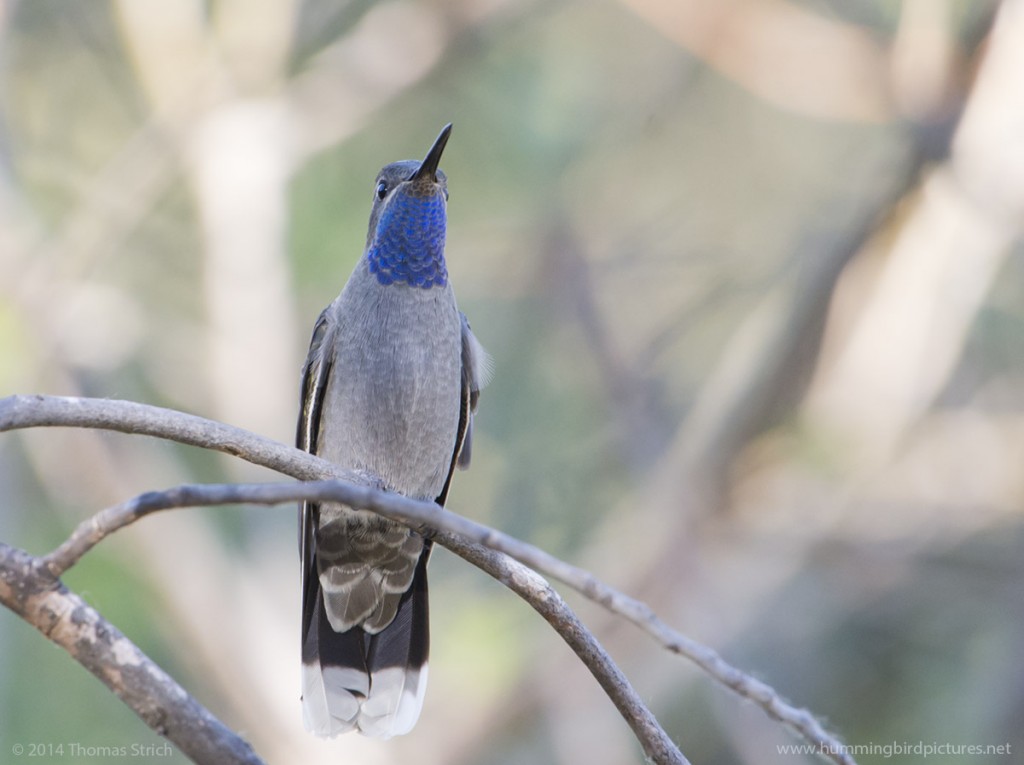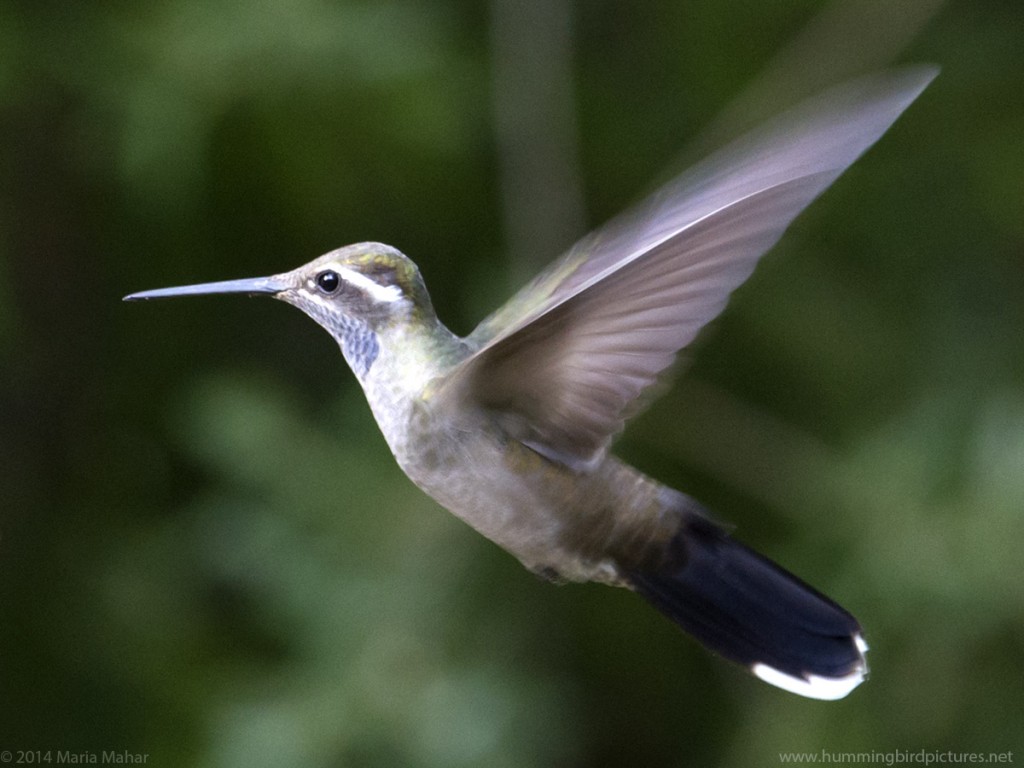The Ruby-throated Hummingbird is the most widespread hummingbird in the United States and Canada. If you live east of the Mississippi, you’ve probably seen one … or many.
Male Ruby-throated Hummingbird
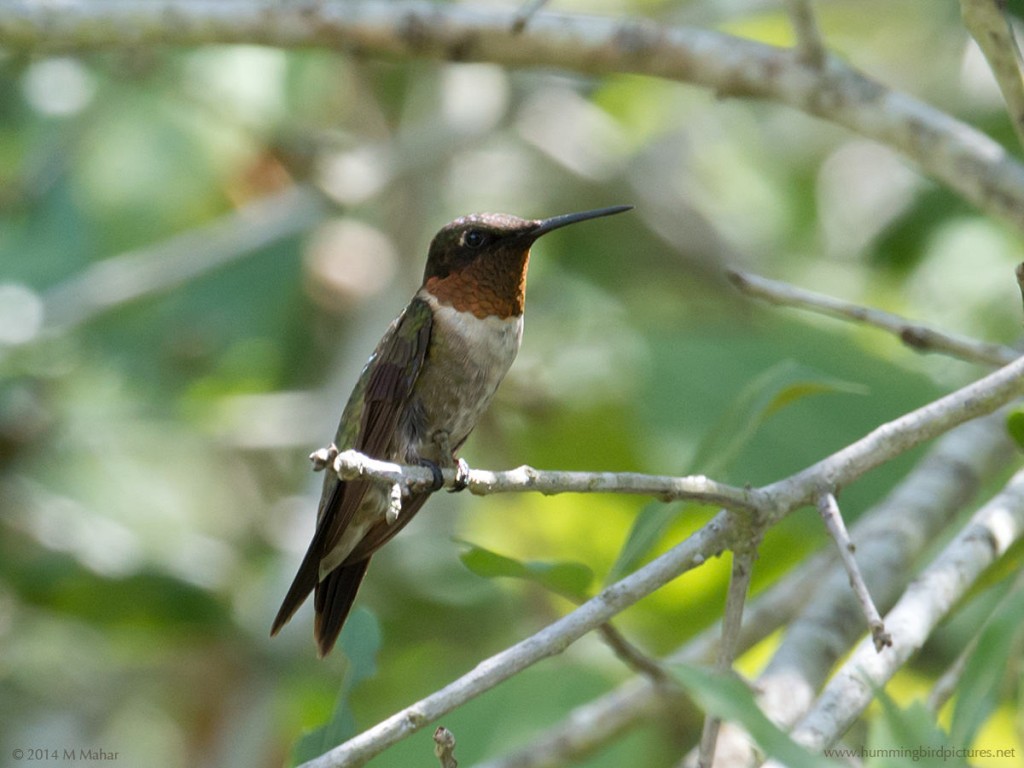
An adult male Ruby-throated Hummingbird has a black head, a red throat (gorget), and a bright green back. This male hummingbird shows the reddish color in his gorget feathers. It was an overcast and rainy day when this photo was taken. There was not enough light to really show off his red gorget.
Here’s the ruby red
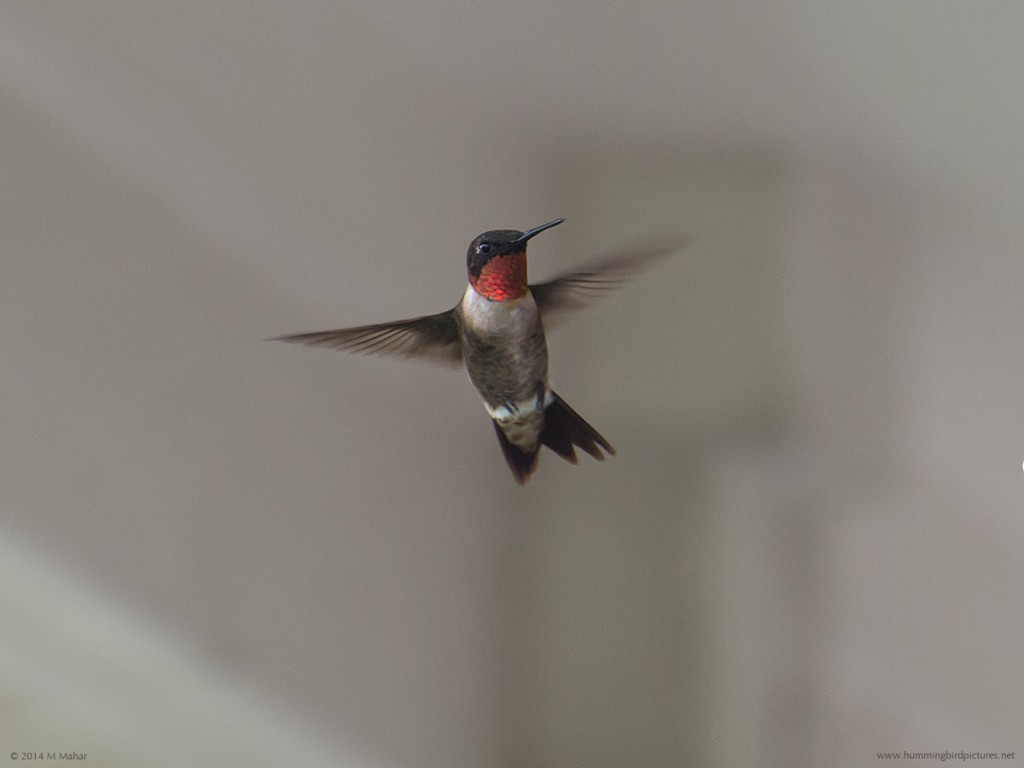
This hummingbird’s gorget caught the sunlight as he flew toward me. It is easiest to see the color when the light is behind you but shining directly onto the hummingbird.
Notice the v-notch or forked tail. Adult male Ruby-throated Hummingbirds have the v-notch tail and pointy tail feathers.
Male Ruby-throated Hummingbird in different light
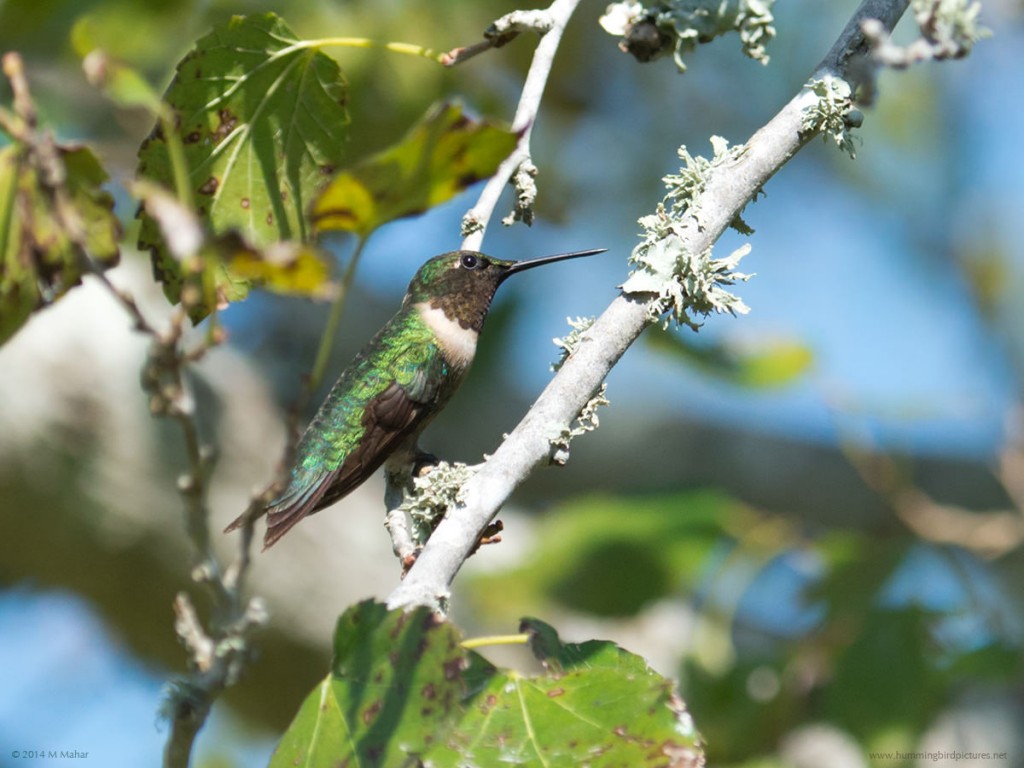
This is a different adult male Ruby-throated Hummingbird. His gorget looks dark, almost black. The sun was out, but the angle was not right for the feathers to appear red.
Female Ruby-throated Hummingbird
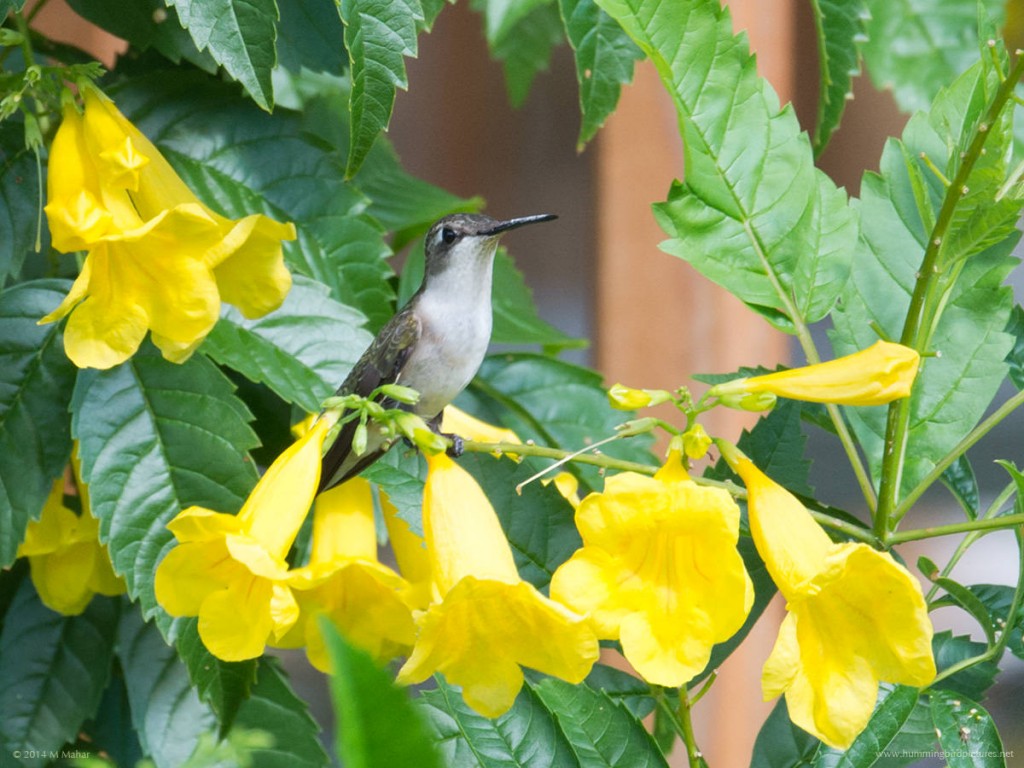
A female Ruby-throated Hummingbird has a plain whitish throat, perhaps with some light markings, and a bright green back. It can be tough to tell an adult female from a very young bird after nesting season. The immature Ruby-throateds can look like this. I would be more certain in calling this a female if the photo had been taken in the spring before young hummingbirds were about.
Young male Ruby-throated Hummingbird
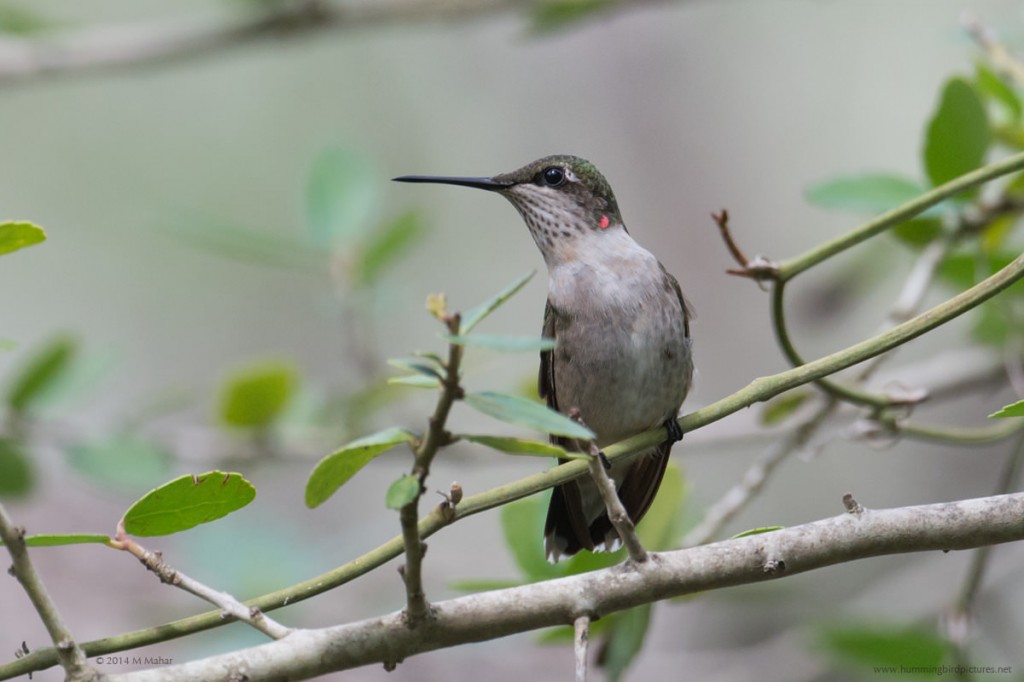
A young male Ruby-throated can have speckling or colored feathers in the throat area. The streaking on this Ruby’s throat, and the stray red feather, show that this is a young male.
Young Ruby-throats in flight
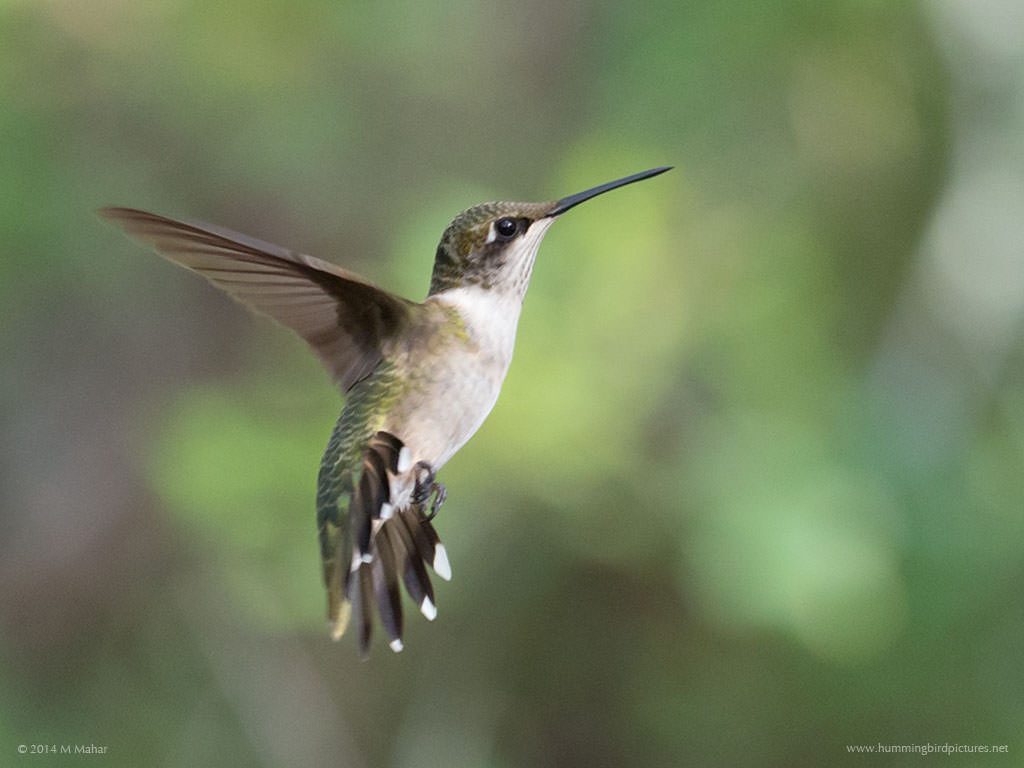
Guess: young male. Reason: spotted throat.
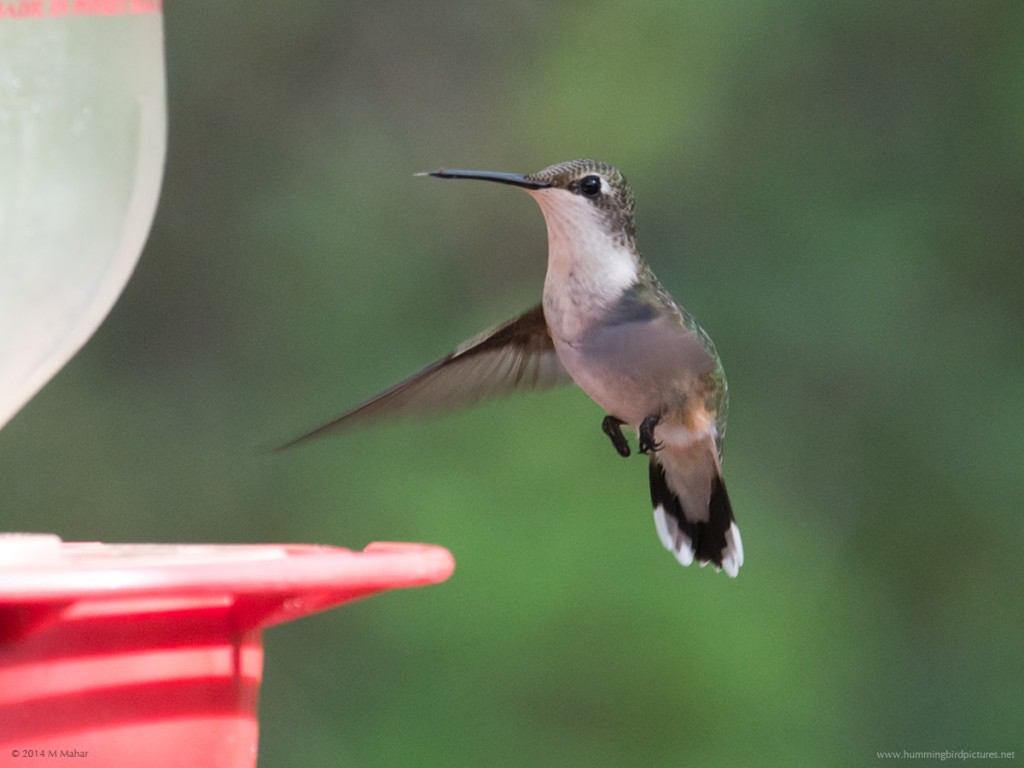
Guess: none. Reason: light throat, rounded white tail tips made me think it was a young female. But I have another, less clear, photo of the same (maybe) hummingbird shows what might be a single red feather in center of throat.
Name and Nicknames
Ruby-throated Hummingbirds have many dedicated fans. And so, they have many nicknames: ruby throated, ruby throats, rubythroat, ruby, rubies, hummers, hummer birds. Here’s their scientific name: Archilochus colubris.
Ruby-throated Hummers
Ruby-throated Hummingbirds migrate long, long distances between where they nest and where they spend the winter. The Ruby-throated Hummingbirds fly each spring from Mexico and Central America up into Texas, Florida, and rest of the Gulf Coast. They then spread up and through the eastern U.S. and Canada to nest. During their return migration in the fall, they concentrate in large numbers along the Gulf Coast.
We know so much about Ruby-throated Hummingbirds in part due to a few dedicated groups and many interested citizens. Great sources of information on Ruby-throated Hummingbirds are Operation RubyThroat, the HummerBird Study Group, and Hummingbirds.net.
Neighborhood birds
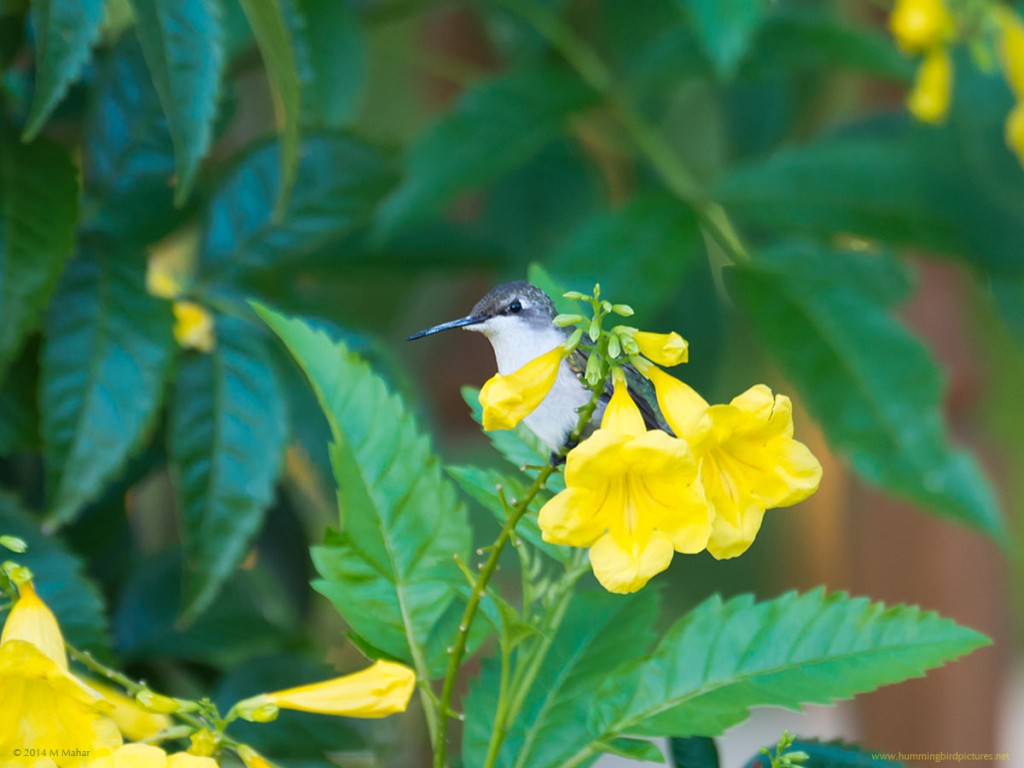
Ruby-throated Hummingbirds like forest edges, parks, and gardens. Just like we do. The picture above was taken in a public park in Rockport, Texas during the 2014 HummerBird Festival.
If you live in the east, we hope you get some Ruby-throated Hummingbirds at your park, school, or home next season.
Thanks for coming by. Back to home or pictures of other hummingbird species found in the United States and Canada.
